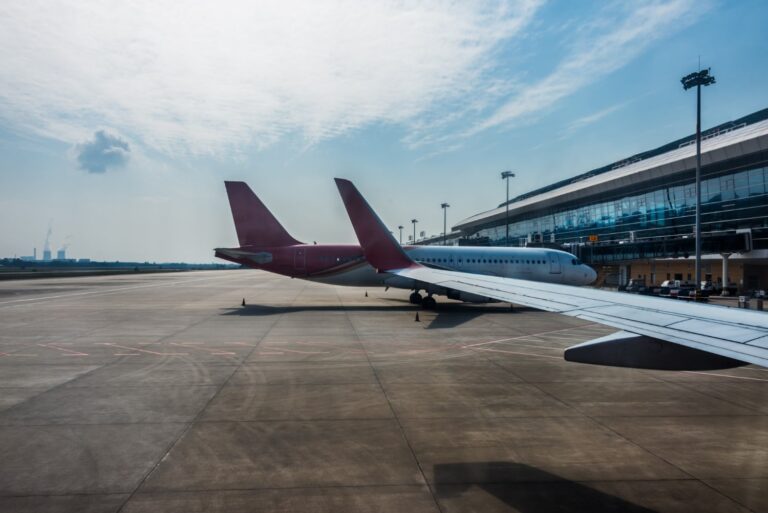Air transport – what is it, what are its advantages and disadvantages?
Air transport , or air transport, is one of the fastest forms of freight transport in the world. Thanks to its unique features, it allows for fast and safe delivery of shipments over long distances, both domestically and intercontinentally. Its role in global logistics is constantly growing, especially in the context of shipments that require fast delivery or involve high-value goods. In this article, we will discuss what air transport is, what its features are, and present the advantages and disadvantages of this type of transport.
Air transport – what is it?
Air transport is a type of freight transport in which aircraft, such as passenger or cargo planes, are used to transport cargo. Unlike road or sea transport, air transport is characterized by a much faster turnaround time, which is its key advantage. Airplanes can cover large distances in a short time, which makes this form of transport irreplaceable for goods that require immediate delivery.
Air transport is mainly carried out through airports, which act as logistics hubs handling thousands of tons of goods every day. This process involves various entities, such as airlines, carriers, airports and international organizations such as IATA (International Air Transport Association), which take care of the standardization of procedures and the safety of air transport.
Features of air transport
The key features of air transport include, above all, its speed. No other form of transport is able to deliver cargo over such long distances in such a short time. In addition to speed, air transport is also distinguished by a high level of safety. Airplanes are one of the safest means of transport, and the risk of damage to cargo is minimal thanks to advanced safety procedures.
Other features of air transport are:
- Global accessibility – airplanes can reach places that are inaccessible to sea or road transport.
- Low risk of damage to goods – thanks to the minimal number of reloadings and precise route planning, the risk of damage to goods is much lower than in other modes of transport.
- Time flexibility – the ability to deliver within a short time makes air transport an ideal solution for urgent shipments.
Application of air transport
Air freight is widely used in various industries, especially where time is of the essence. It is used to transport high-value goods, such as electronics, pharmaceuticals, and luxury products. It is also indispensable for goods that must be delivered in perfect condition, such as fresh food, flowers, and medicines.
Air transport is also crucial in crisis situations, such as natural disasters. With quick access to remote areas of the world, aircraft are often used to deliver humanitarian aid, making air transport an invaluable tool in such circumstances.
Advantages of air transport
Air transport offers many advantages that make it the preferred form of transportation for many companies and organizations around the world. The most important benefits include:
- Speed of delivery – air freight is the fastest way to deliver goods over long distances, making it an ideal solution for urgent shipments.
- Safety – Low risk of cargo damage and high levels of in-flight safety make air freight the preferred choice for high-value goods.
- Global availability – airplanes can reach remote locations that are inaccessible to other means of transportation.
- Lower infrastructure requirements – compared to sea transport, air transport does not require extensive port infrastructure, which facilitates the organization of shipments.
Disadvantages of air transport
Despite its numerous advantages, air transport also has its disadvantages that may limit its use. The main disadvantages of this type of transport include:
- High costs – air freight is definitely more expensive compared to road or sea freight. High ticket prices, customs fees and fuel make this form of transport available mainly for high-value goods or urgent shipments.
- Limited cargo capacity – Aircraft have limited capacity, which can make transporting bulky goods difficult.
- Environmental impact – air transport generates higher CO2 emissions than other modes of transport, which poses a significant challenge in the context of achieving sustainable development.
- Weather dependency – flights may be delayed or cancelled due to adverse weather conditions, which may affect delivery times.
Organization of air transport
The process of organizing air transport is complex and requires precise planning and coordination of many activities. First, it is necessary to collect the appropriate customs documentation and prepare the cargo for transport. Then the goods are transported to the airport, where they undergo customs clearance and are loaded on board the aircraft. After arrival in the destination country, another customs clearance takes place, and then the goods are delivered to the indicated address.
Air transport can be carried out both as passenger flights and special cargo flights. In the case of large-sized shipments or those requiring special conditions, it is possible to rent an aircraft exclusively, which allows for more flexible transport management.
The most cost-effective shipments – air freight
Air freight is particularly cost-effective for high-value goods that need to be delivered quickly. This applies in particular to shipments such as:
- Electronics
- Pharmaceutical products
- Luxury goods (e.g. jewellery, works of art)
- Fresh products (fruit, vegetables, seafood)
Air freight is also used for urgent shipments, such as spare parts for the aviation industry (Aircraft on Ground), which must be delivered immediately to prevent disruptions in flight operations.
Air transport restrictions
One of the main limitations of air transport is its capacity. Airplanes, compared to sea ships or trucks, can carry much less cargo. This makes air transport not an optimal solution for large-sized shipments, such as machinery or industrial raw materials.
Additional restrictions include customs regulations and the need to clear both the origin and destination airports. This can extend the transport time, especially in the case of international shipments.
Conclusions
Air freight is one of the most modern and fastest solutions in logistics, which allows for the efficient implementation of global supply chains. Despite high costs and capacity constraints, the features of air freight, such as speed and safety, make it irreplaceable for high-value or immediate shipments.






